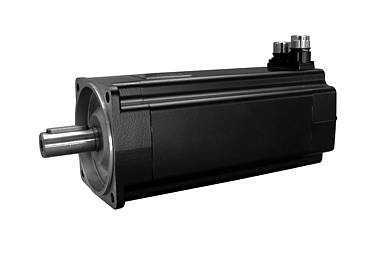Posted on 4th Aug 2023

Smartphones, smart watches, smart homes, and smart factories are all available. It seems to reason that we have intelligent motors, right? Traditionally, a motor drive had only one function: to drive a motor. That's not all; the drive must also be capable of higher-level activities like predictive maintenance, industrial communications, functional safety, and other functionalities prominent in the Industry 4.0 movement.
Motor drives are widely classified by two characteristics: the power supplied to the motor (alternating current or direct current) and the control mechanism used (closed-loop or open-loop control). Because of their sturdy and reliable operation, ac drive are favoured in industrial environments. However, they have generally been unable to match the performance of dc drives over the entire speed range (for example, full torque at low or zero speed).
With the introduction of closed-loop vector control, such as Field Oriented Control (FOC), AC drives such as Lenze Drive, Siemens Drive, Keb Drive, Darwin Motion DrIVE may now equal the performance of DC drives over the whole speed range while keeping their long life and reliability. Closed loop control necessitates extra processing capacity in the controller as well as additional hardware in the form of encoders or resolvers, but it is widely used in industrial situations where precision control and dependability are critical. We'll concentrate on AC drives with closed-loop control, sometimes known as ac servo drives. Figure 1 depicts a cabinet with numerous AC drives.
Ac inverters normally employ a one-directional, open-loop method to control the speed and torque of a motor by adjusting the alternating current frequency and amplitude applied to the motor. Servo drives enhance control by employing position input from an encoder or resolver to build a closed-loop system that reads and controls the exact position of a motor's rotor shaft. Feedback signals can be phase current and voltage signals, or they can be generated by a digital position encoder such as Hiperface (digital servo link) DSL or EnDat 2.2. Servos employed in tough conditions traditionally rely on analogue feedback elements such as resolvers, but due to their superior precision, digital encoders are becoming increasingly prevalent in mid- to high-end servos. This level of precision is required in the rapidly expanding robotics and automated machinery markets, where servo drives are commonly used.
Moving from classic microcontroller- or field-programmable gate array-based designs to processor-based servos involves tradeoffs, as with most things. Depending on the features you wish to enable, designers must master new development environments and become acquainted with real-time operating systems as well as high-level operating systems such as Linux. Furthermore, where you gain integration at the system level, you lose some at the SoC level as compared to a microcontroller.
Although a processor-based system has a higher barrier to entry, it looks that the industry is going towards this architecture. We're excited to watch where the servo drive business goes in the next years, especially with other factory revolutions like Time-Sensitive Networking, or TSN. Fortunately, there are processors on the market that are ready for these next-generation systems, such as those shown in Fig. 3.
The automation industry's rapid growth and change is the primary pushing reason behind better servos. Whereas a motor drive used to be 80% drive and 20% services, the drive of the future will be 20% drive and 80% services. This isn't to argue that the importance of drive functionality has reduced, but the services segment has expanded dramatically in the last few decades and will continue to increase as industrial automation enters yet another revolution. The most important Industry 4.0 service is undoubtedly industrial communication.
Microcontrollers generally feature embedded flash memory, integrated power management, and integrated Ethernet physical layers; in contrast, processors typically do not have these components integrated and so contribute to the total bill-of-materials (BOM) cost. However, this does not mean that a processor-based system will be more expensive overall, because system-level integration may eliminate more expensive components such as industrial communication application-specific integrated circuits. However, at the component level, processors are frequently more expensive than microcontrollers.